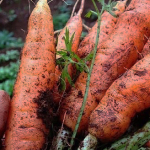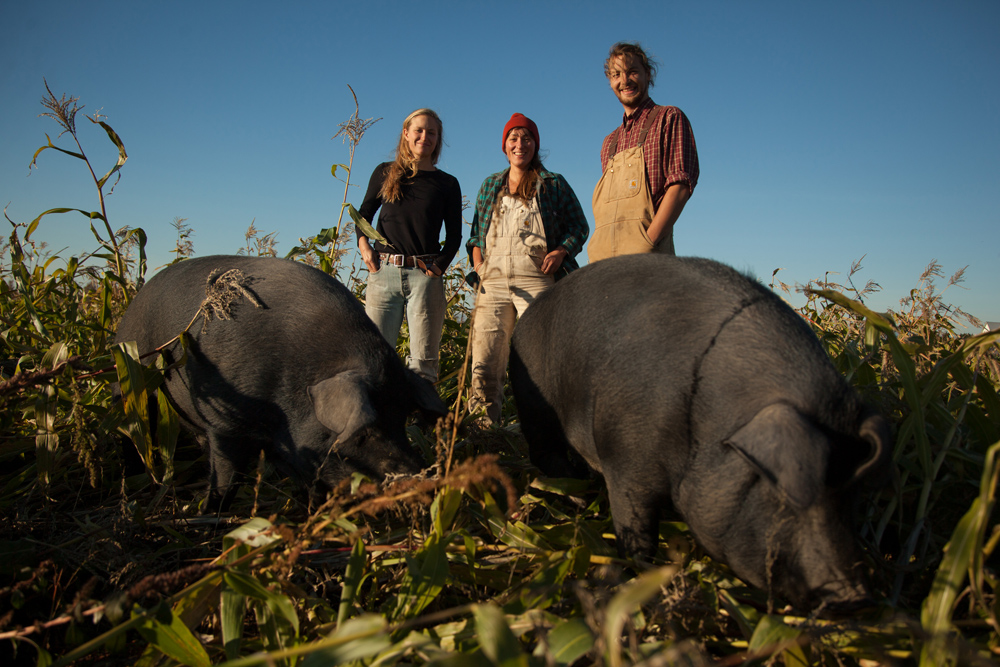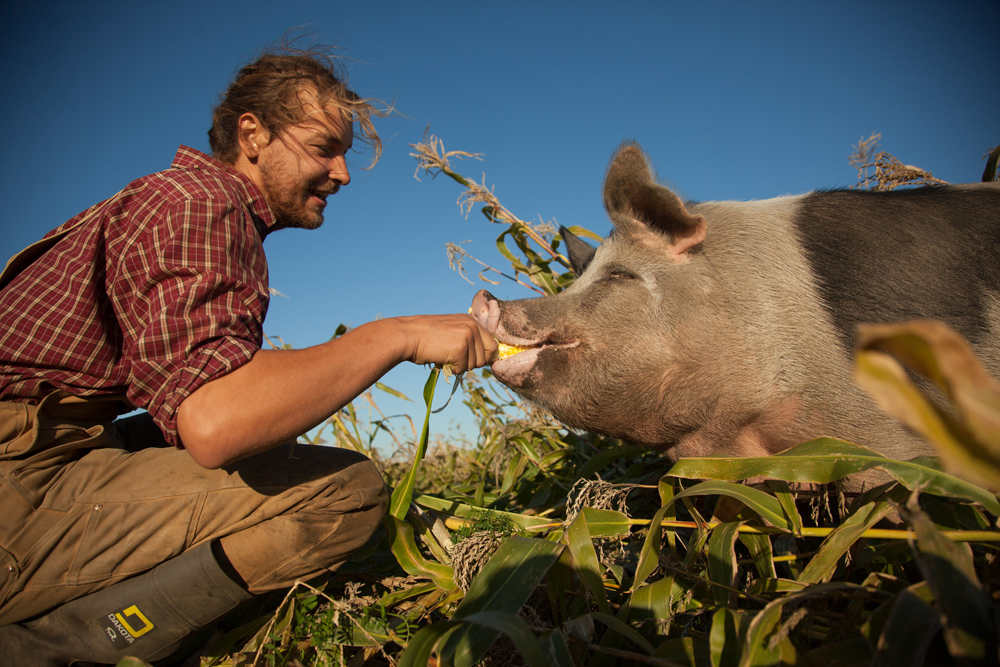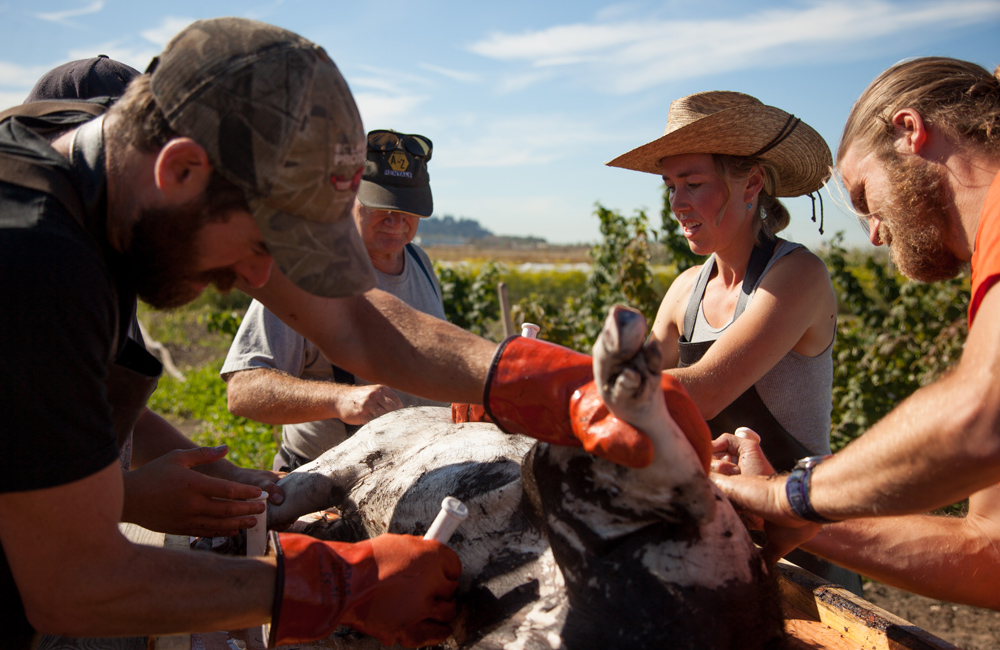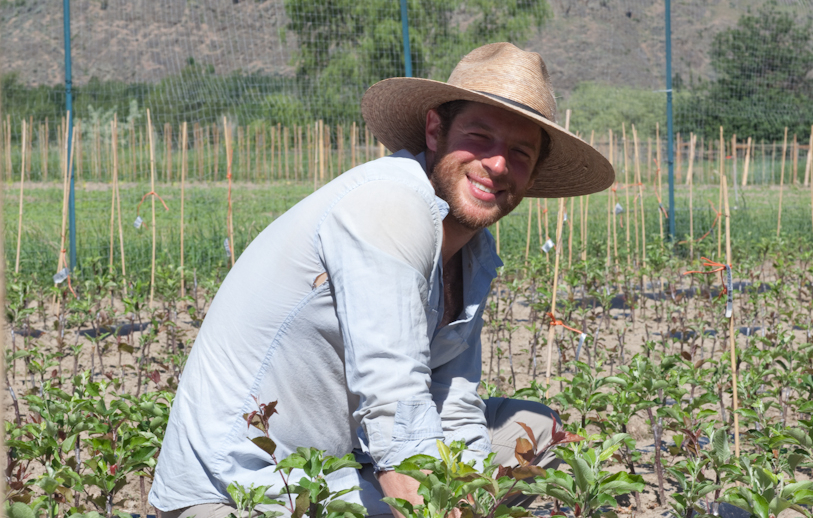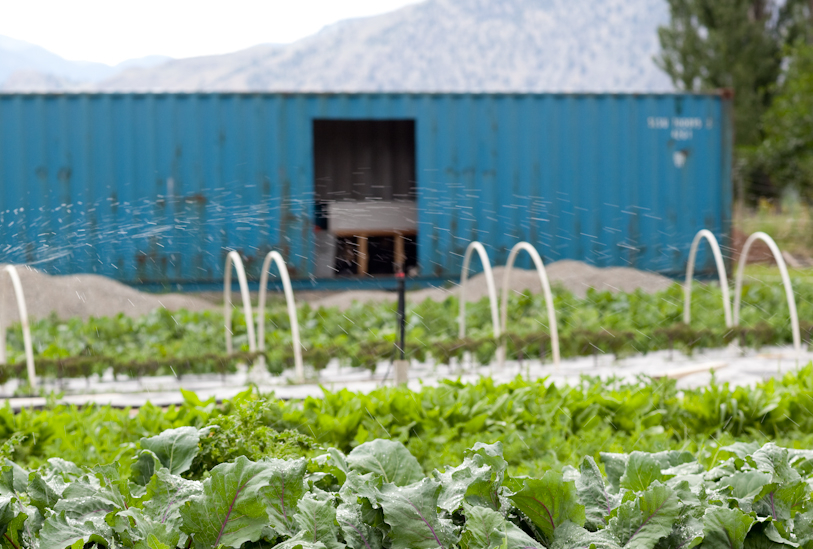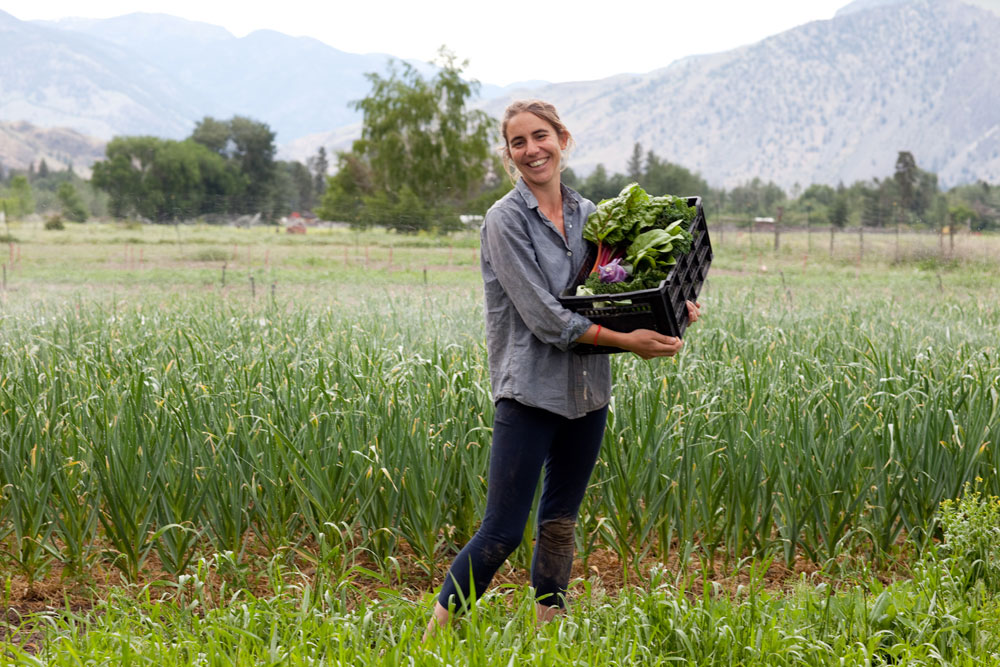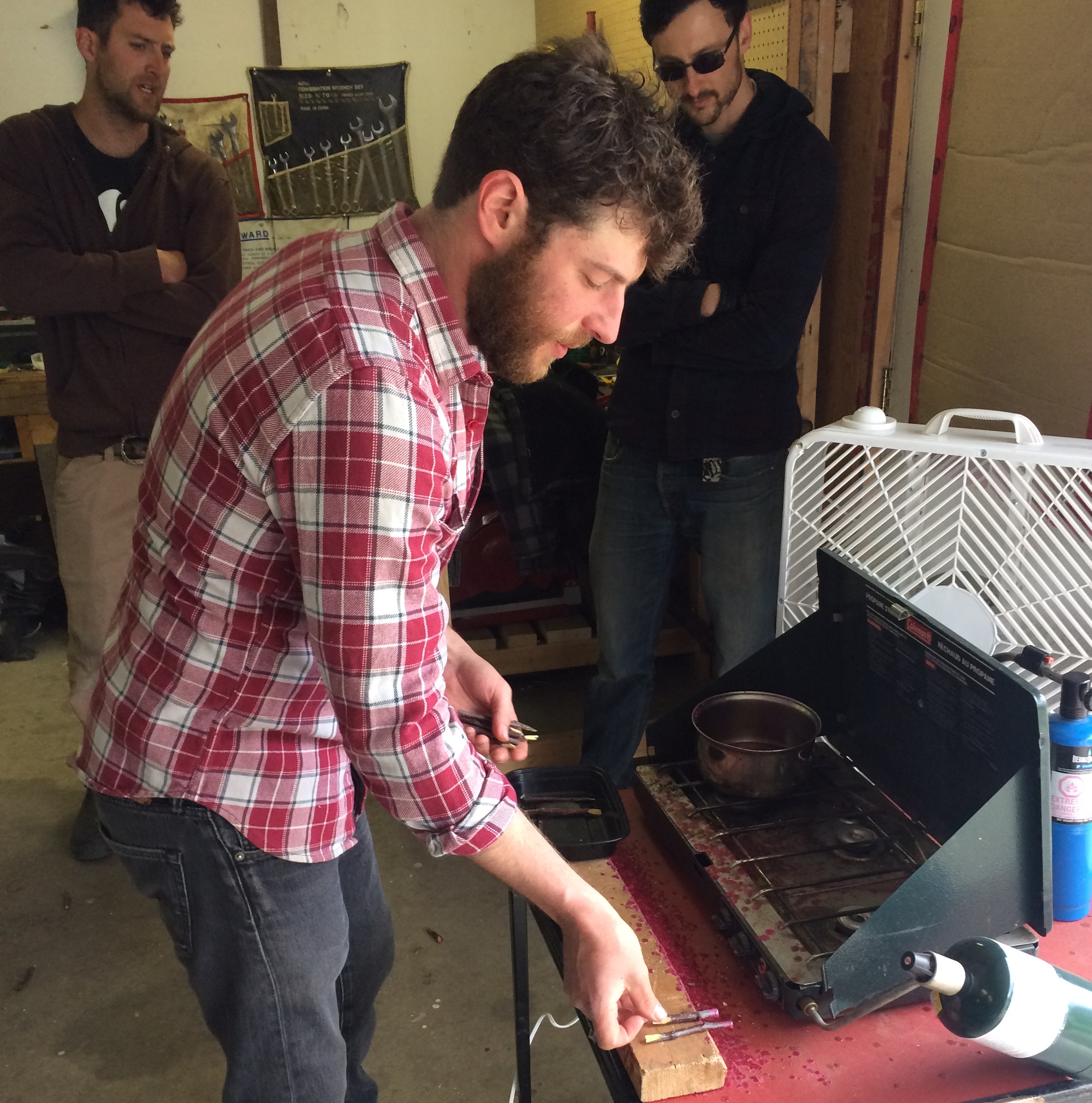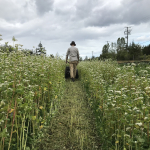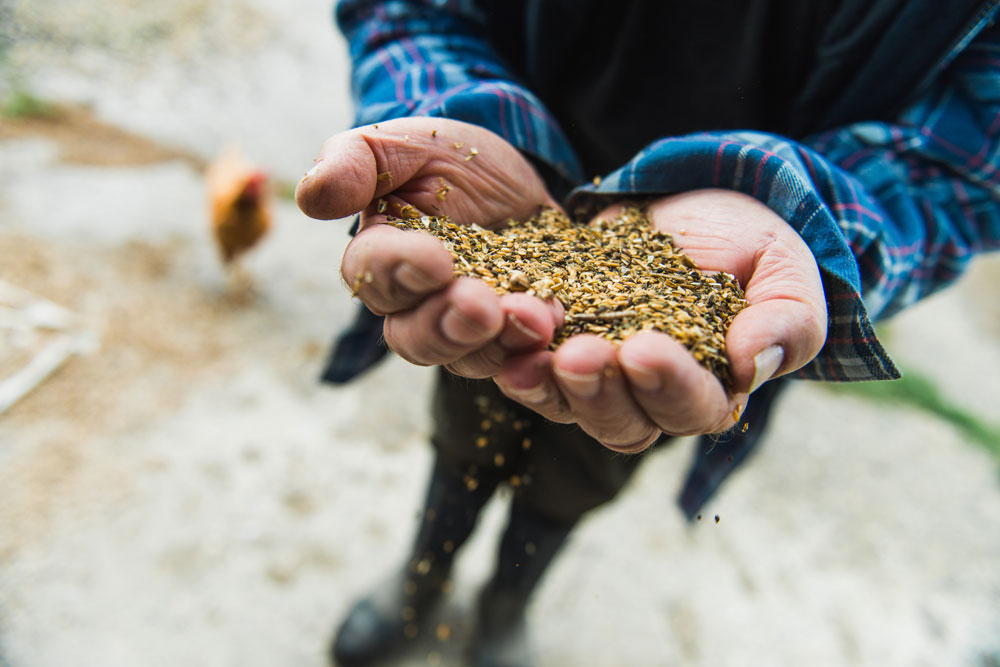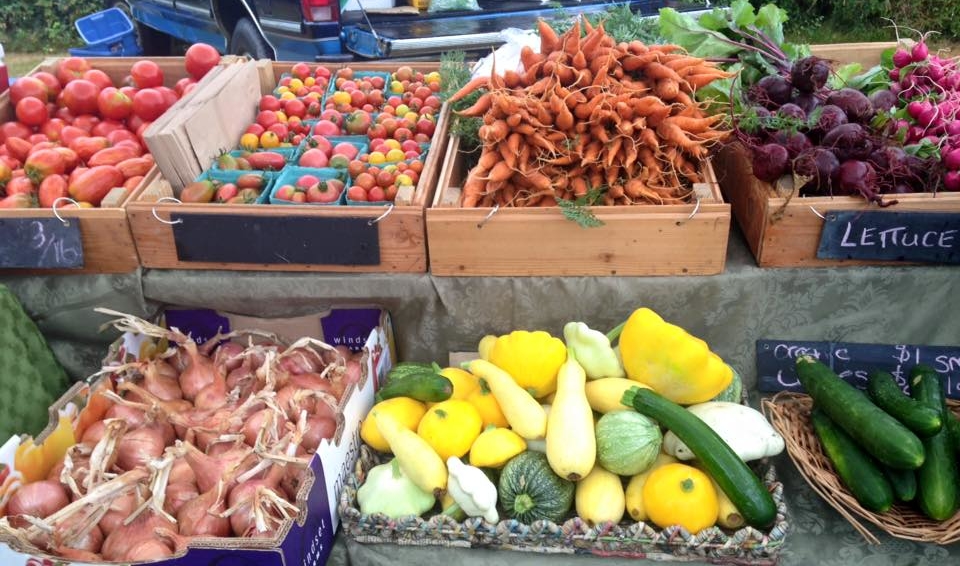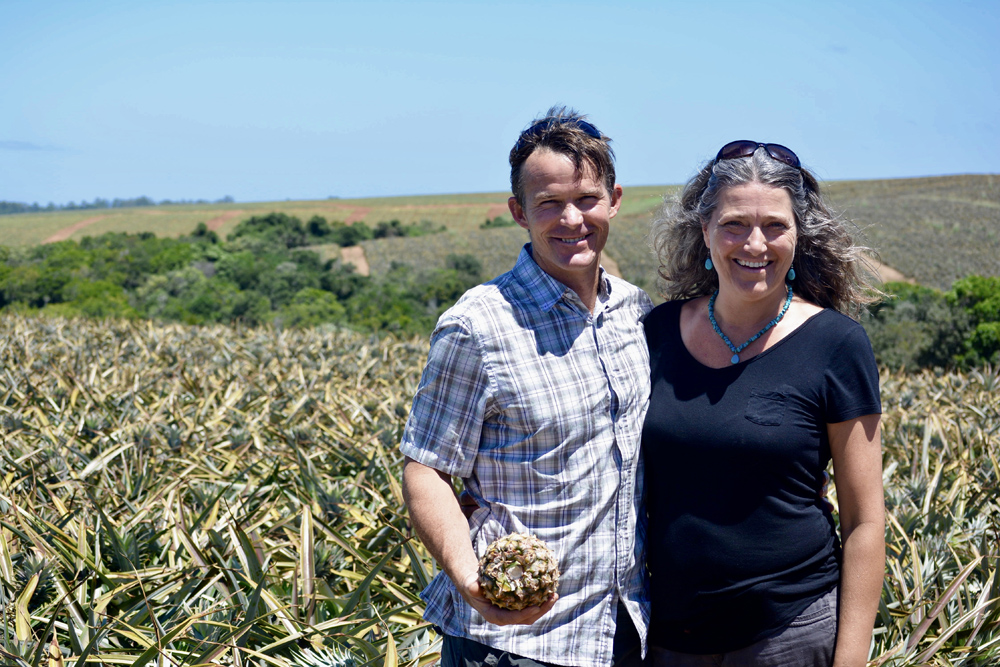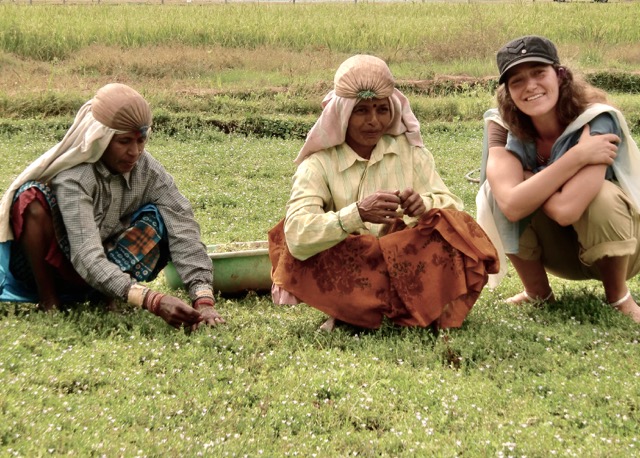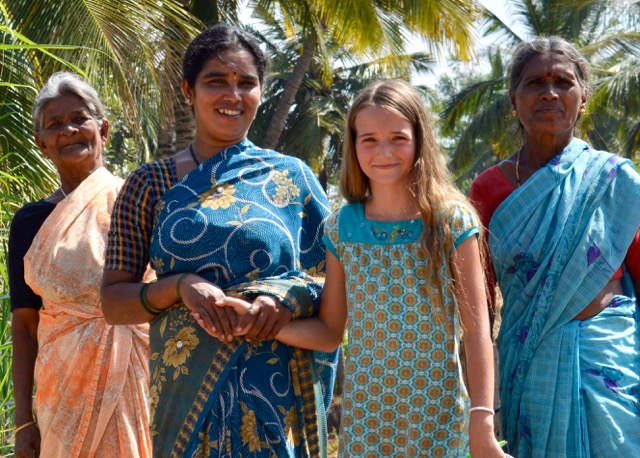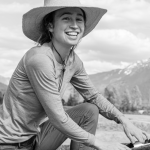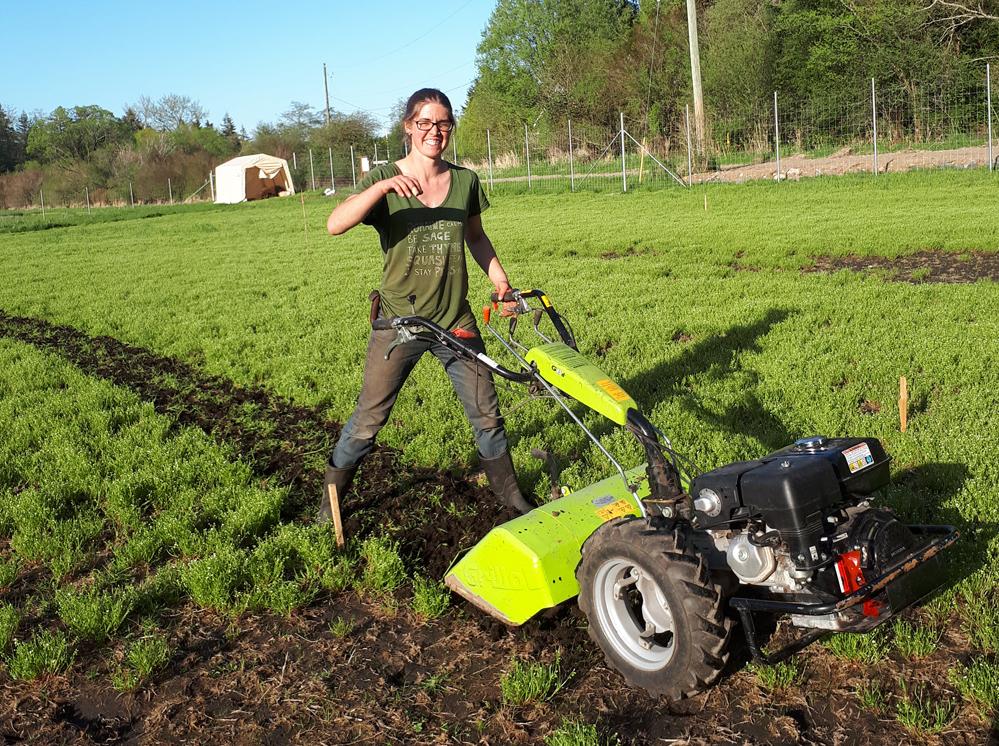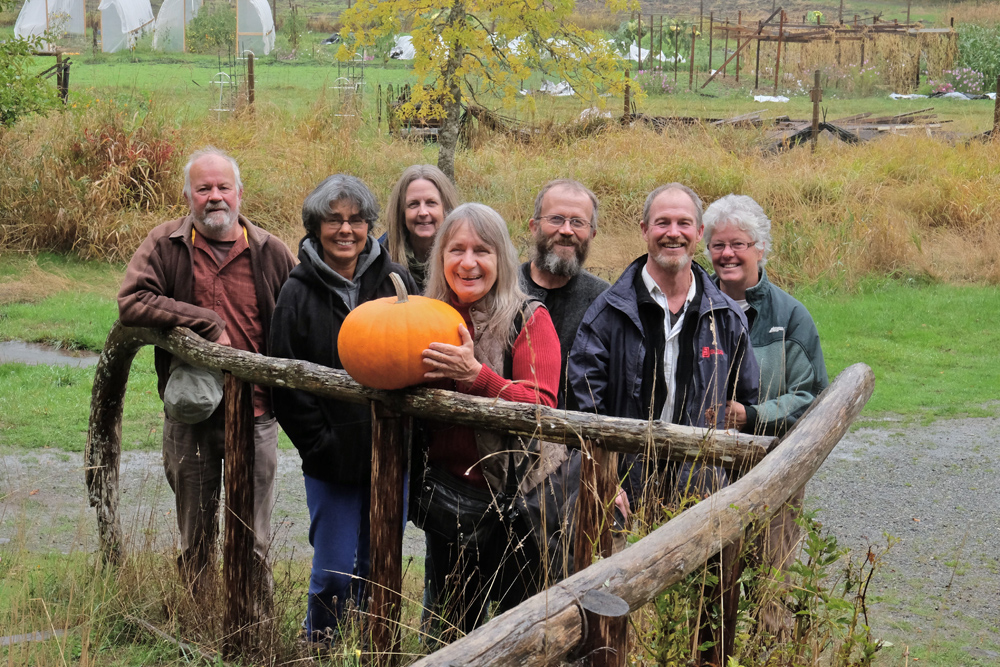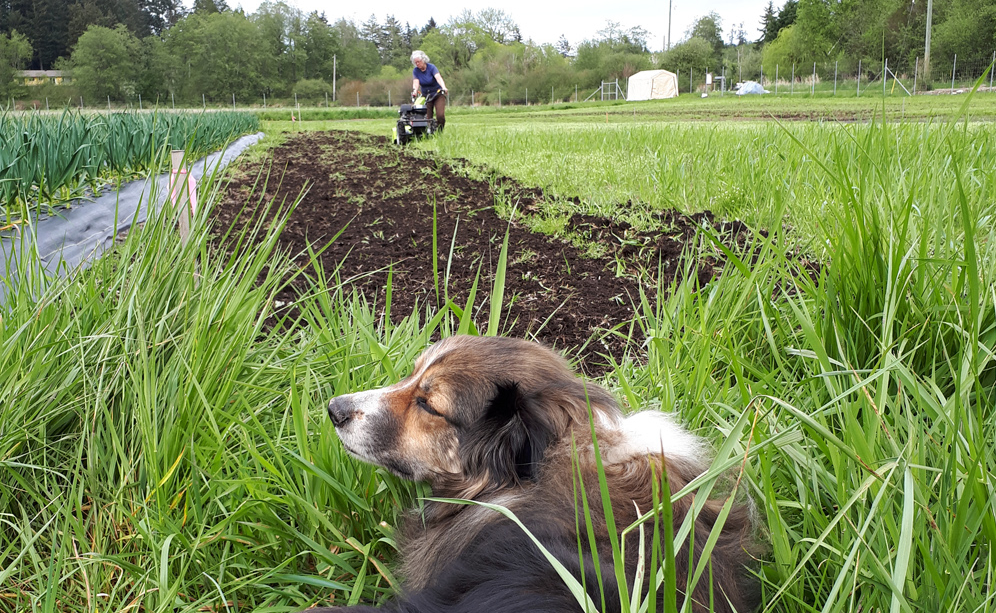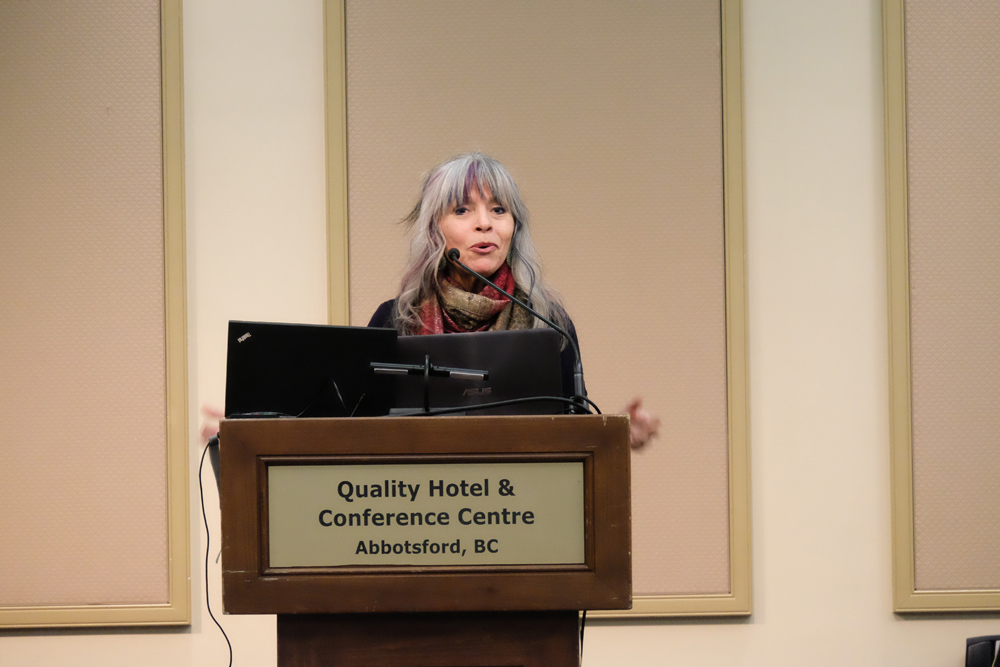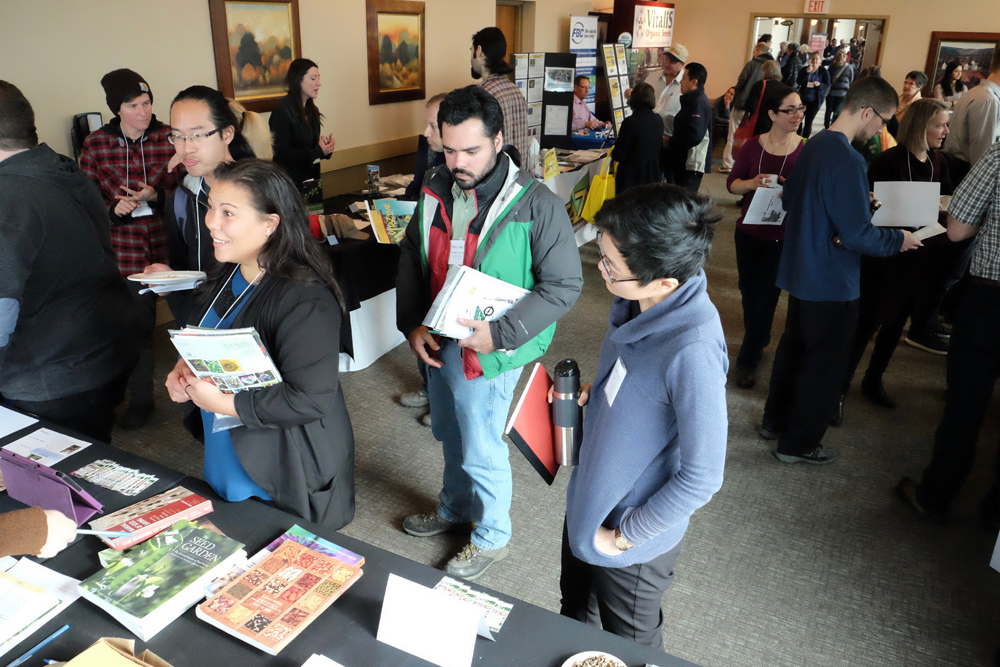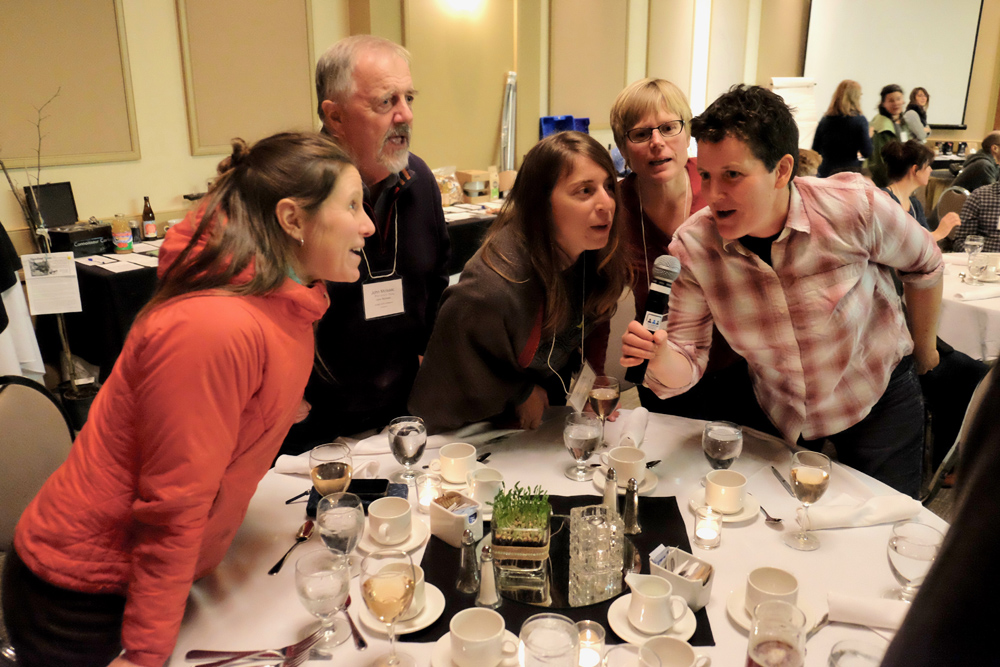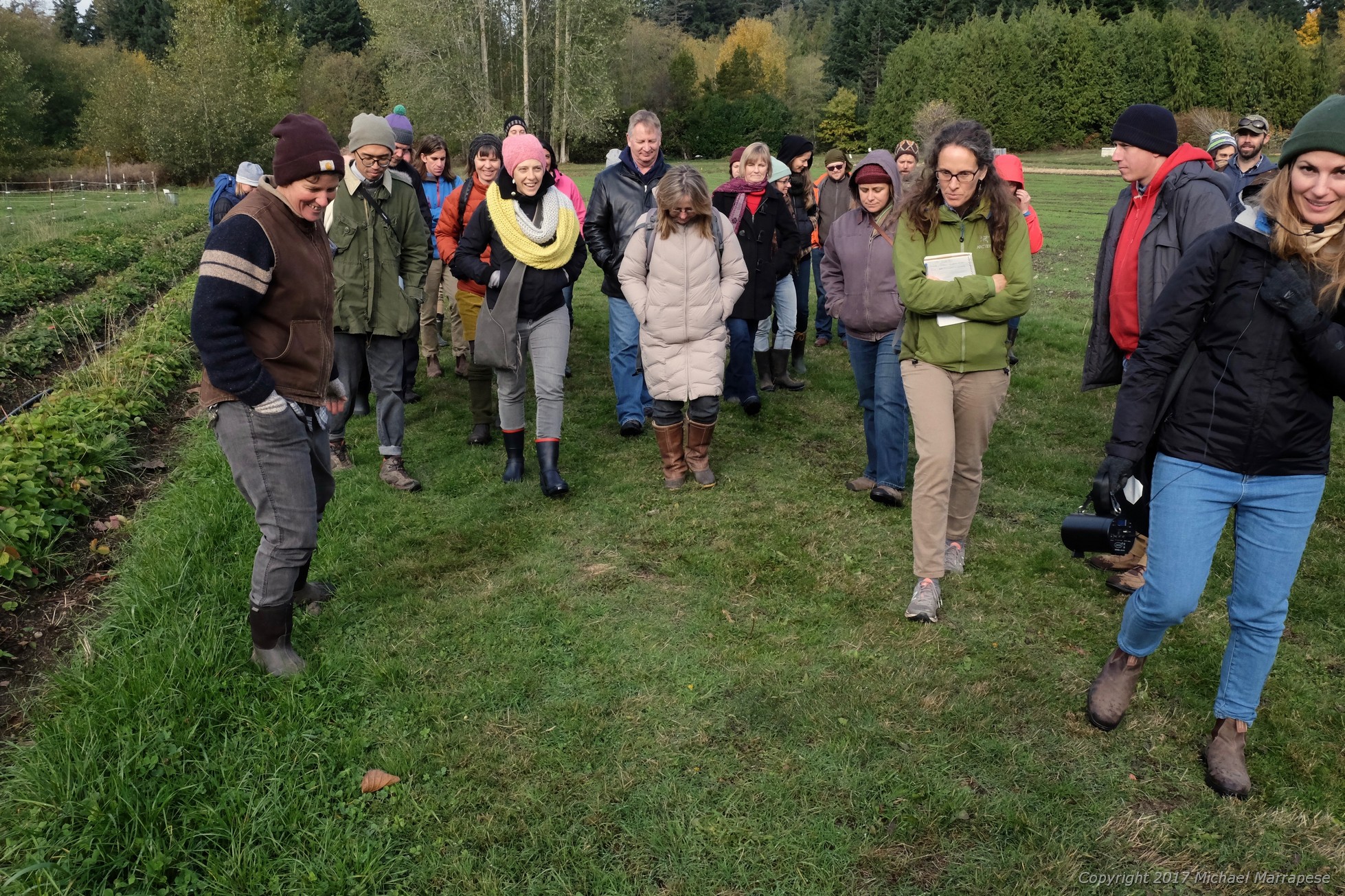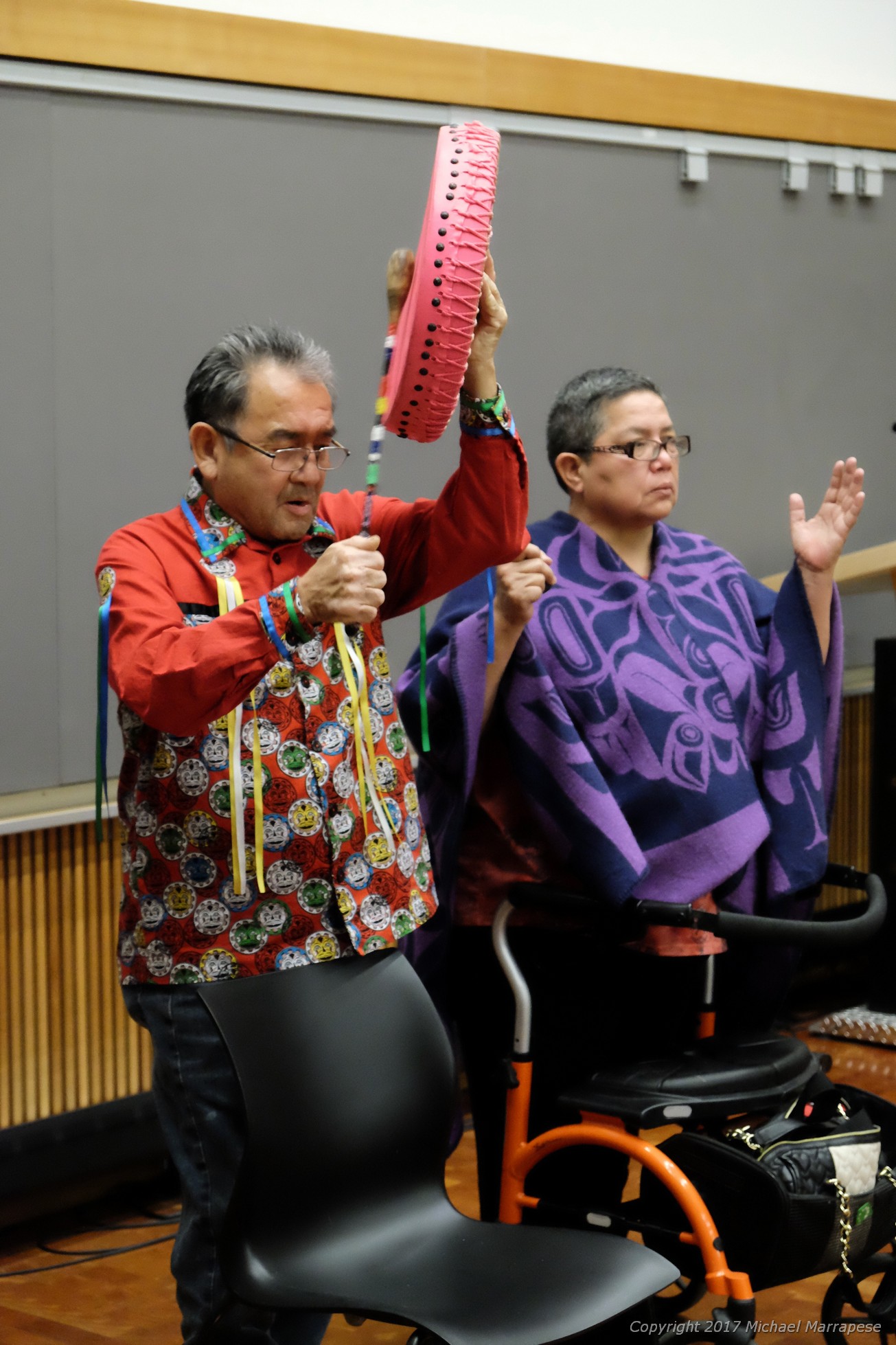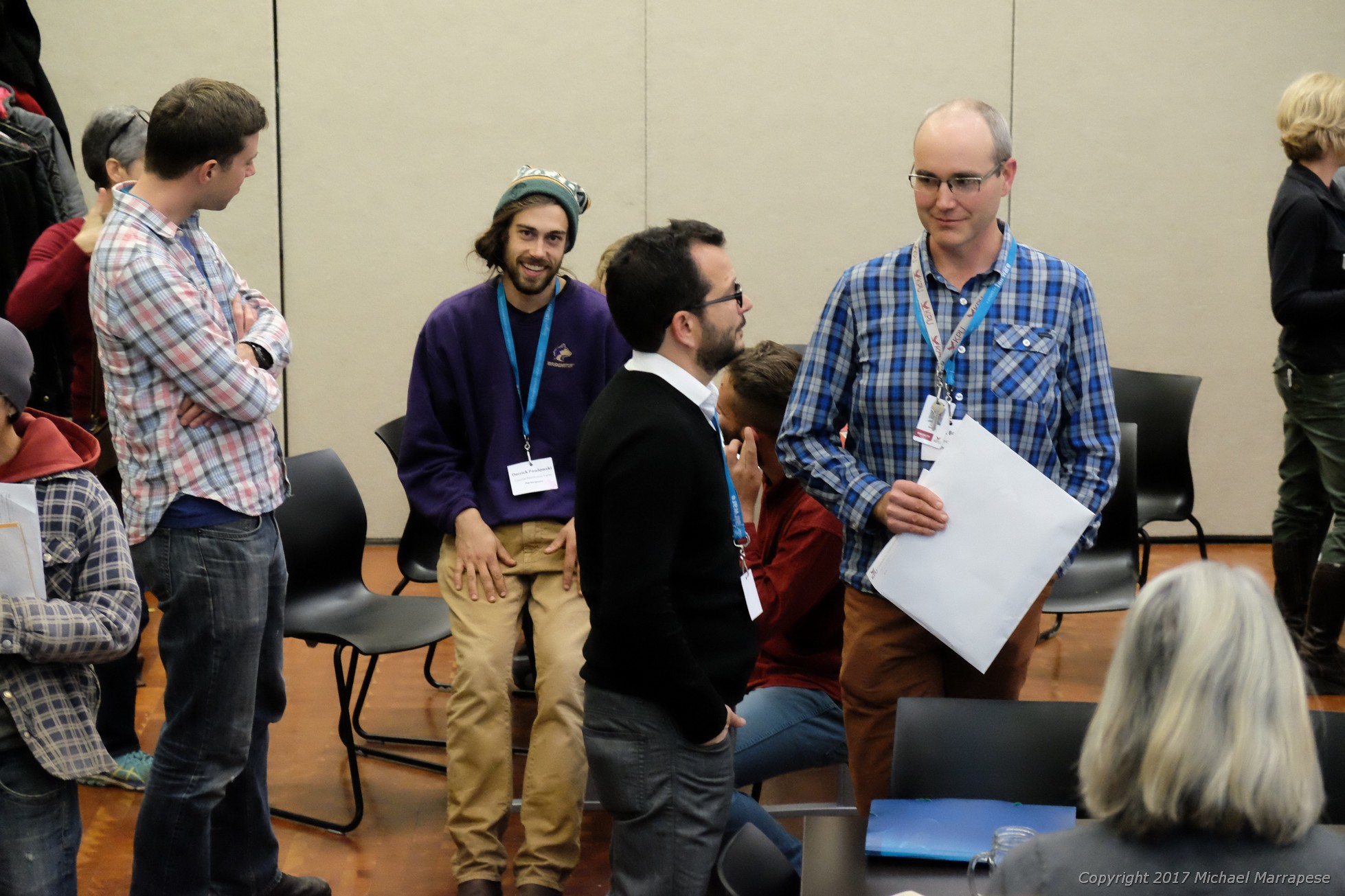Organic Stories: Gabriola Food Hub

A Two-Wheeled Ride through Gabriola’s Growing Local Food Economy
Hannah Roessler
Graham Bradley is a busy guy. I catch him on a rare day off to talk about the Gabriola Food Hub, but we end up delving into the importance of cultural shift, decolonization, green transportation, feeding passions, and systems thinking. The spill over into all of these topics comes as no surprise—so many of us land-based workers, dreamers, and thinkers recognize and ponder the layers of complexities and interconnectivities encountered when engaging on food systems work on any level. Graham is a dynamic individual who spans several roles in the food system on Gabriola Island. He is someone who is clearly driven to make a difference, and has fully invested his whole self into this pursuit.
Take his work with the Gabriola Food Hub (GFH), a collective marketing hub made up of three main partner farms: Heart and Soil Farm, Good Earth Farm, and 40×40 farm. Not only is he the founder of the GFH, but he is also the “aggregator, communicator, and distributor.” He is the guy who pulled the farms together and connects the farms to various markets, and he is the one you will see delivering all the produce—he has roles in both the center of the hub, as well as the spokes.
Graham is quick to assert that he is not inventing something new, and is generous while listing off his many mentors. He names, with much gratitude, those who taught him about farming and marketing (Ferm Melilot in Quebec, Saanich Organics in Victoria, Ben Hartman’s Lean Farm approach, and more), those who helped him with legal agreements for land sharing (Young Agrarians and other generous legal advisors), his business mentorship through Young Agrarians (with Niki Strutynski from Tatlo Road Farm), the chef on Gabriola Island who last year solidly ordered produce from him every week (Kellie Callender from Silva Bay Restaurant). He even tells me about Josh Volk, the person who inspired him to build his delivery bike, named Pepper, on which he does all of the deliveries for the GFH. Something that I really appreciate about Graham is how much he obviously values the relationships that he is cultivating through his food growing—this seem to be his own personal heart hub from which all the other spokes of his work flow.
While the GFH echoes other models of marketing that exist in the small scale organic farm world, there are of course differences. These are all tied distinctly to the difference in “place”—all the variations and oscillations in the GFH are distinctly their own, as they seek to find their own dynamic equilibrium. Each of the participating farms is striving to find what model of farming and marketing works for the particular scale and sites that they work and live within, in every realm. Every farm business has to find the right flow that works in their particular bioregion, and it’s clear that when Graham talks about the GFH, he is very much focused on the interconnected systems of ecology, economics, and community that are distinct to Gabriola Island.
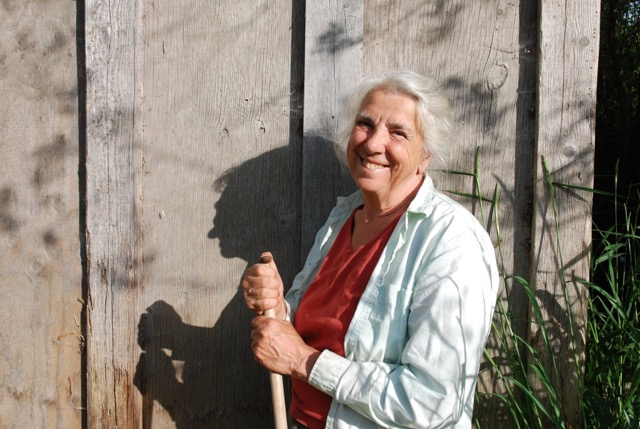
Graham refers to what they at GFH are aiming for as “super-hyper-local”—and they’re not pulling any punches. He’s been working tirelessly with his partners, Dionne Pepper-Smith and Katie Massi from Heart and Soil, Lynn from Namaste Farm, Rebecca from 40×40 Farm (which Graham also co-manages), and his land partner and co-farmer Rosheen Holland at Good Earth Farm, to sell everything they grow right on Gabriola Island.
In the past, these farmers usually had to go over to Cedar on Vancouver Island to sell their produce at the market. Now, with the GFH entering its third year of business, those days are done as they move towards the super-hyper-local vision. Their biggest commercial customer is the Village Food Market, the largest grocery store on Gabriola Island. “We are actually managing to replace the lettuce [that is usually sold at the market], lettuce that comes from off-island, with our lettuce. It’s exciting,” says Graham. They also run a box program, which is really important to their business, and is something that they hope to continue growing.
Another approach that helps them realize this super-hyper-local vision is how all the farms work as a team, both together and with their environment. When I ask Graham if the farms do their crop planning together, he says “well, the farms plan it on their own”. The GFH farms really embrace each of their unique microclimates, which allow different crops to thrive. They don’t try and do it all, all the time, but they work with the strength of the local ecology of each farm site. Good Earth Farm tends to flood every year, but they find that their best spring crop is lettuce, and their best winter crop are storage crops: they do grow some chard, but harvest it, roots and all, and keep it in the cold room for continued harvest into winter. At 40×40 Farm, they are really focused on salad greens. At Heart and Soil, their site is particularly good for growing early on in the spring, and they “are a bit warmer so they grow loads of tomatoes,” says Graham. “They don’t have root maggot, so their radishes and Hakeuri turnips are so beautiful that we’ve stopped growing ours.”
It’s almost as though Graham frames the land as the ultimate leader of their little team: “it’s really just the geography that is key to making all of this work in the way it does.” And when it comes to enjoying the bounty of the island, they don’t stop at just farms. “If I see grapes,” Graham exclaims, with a fair share of eye twinkle, “and it’s in someone’s backyard, I will knock on the door and ask them if I can sell it for them.”
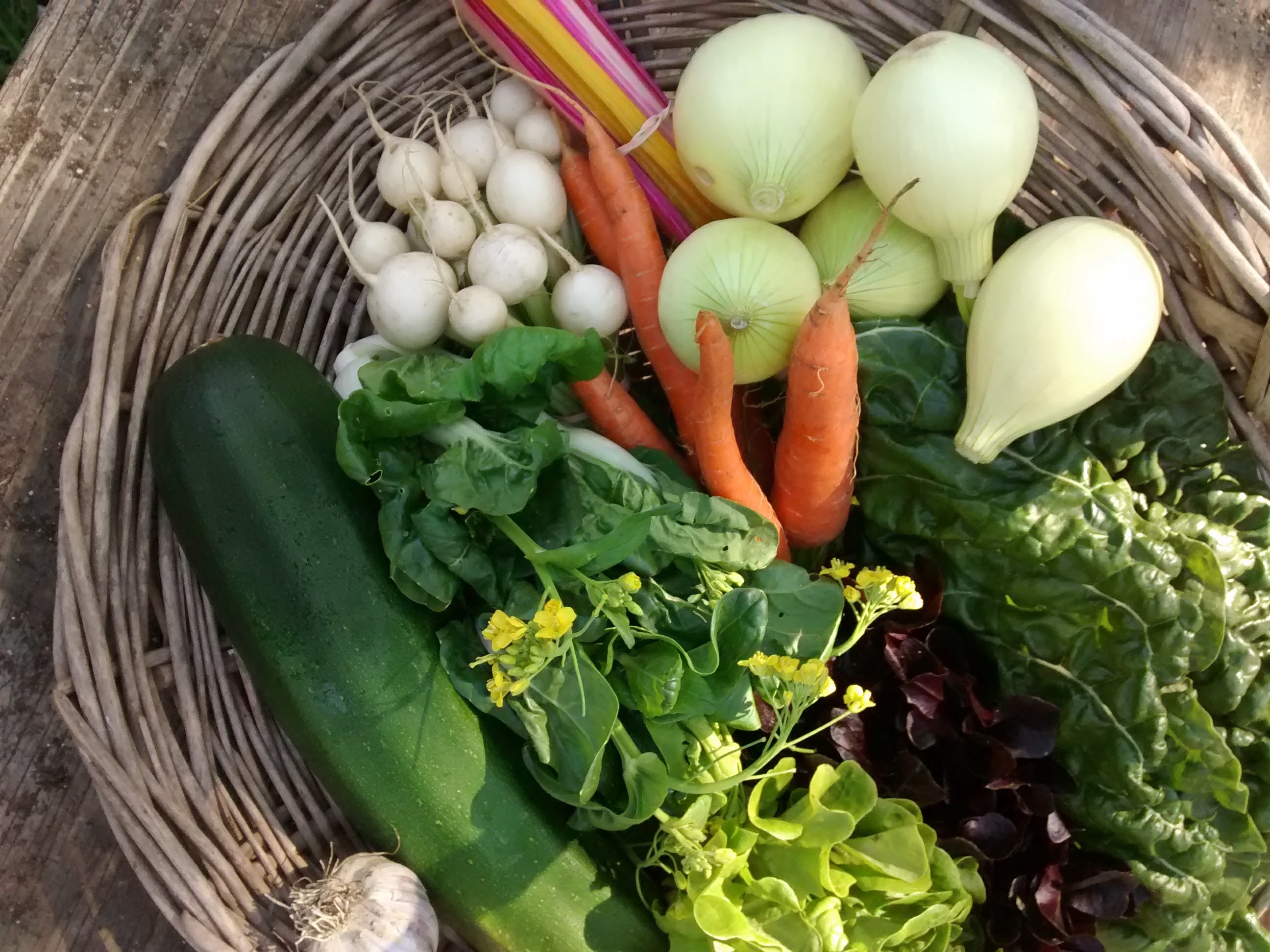
This opportunistic approach and ability to be flexible is bound, as any farmer knows, to create quite a bit of extra work. And in a busy farm season, it seems hard to imagine taking on extra bits and pieces. But it seems to fit in Graham’s wider hopes for the food system on Gabriola. We had a long discussion about trying to think a bit more outside of the traditional agriculture box, hoping to understand the potential for managing the broader ecosystem for food in a careful way.
“I think we can have a full and complete food system here, we just have more to learn” says Graham, respectfully acknowledging the long term management of a food system by the Snuneymuxw, long before agriculture as we know it arrived to the island. Graham is keen to continue learning how to incorporate a broader vision, and in the meantime, on the peaty grounds of Good Earth Farm they are busy planting Malus fusca, relying on the embedded local knowledge of that native rootstock to help it withstand rainy winters.
With all the successful strides they’ve made, trying to effectively respond to the dynamic nature of a particular bioregion, of a particular place, must certainly be challenging. I ask Graham about this, and he names some common themes that most farmers struggle with: the desire for more restaurants to get on board with buying local produce, how small their market is, how difficult it is to rely on commercial clients, being burnt out and overworked, etc.
I am particularly curious about how he manages his own work-load, because as every other farmer I know, he seems to have several jobs and commitments. He is also the Chair of the Economic Development Advisory group on Gabriola Island, as well as the National Farmers Union Youth Advisor for BC. Graham is practically bursting with energy even as we quietly sit and chat, and he is so clearly committed to his vision of a better food system and green transport—but he admits to it being overwhelming at times.
Then he explains to me the moment of his day which feeds his energy and desire to push through and keep striving, and I’m left with a clear picture painted in my mind: Graham on Pepper, his bright red electric cargo bike, loaded with veggie boxes, ripping full speed down a hill framed with soaring trees, exuberantly singing Janis Joplin tunes to scare away the deer, and periodically yelling gleefully “the future is NOW (insert expletive)!”
Check out the Gabriola Food Hub: gabriolafoodhub.com
Hannah Roessler has farmed in Nicaragua, Washington, and BC on permaculture famers, polyculture cafetals, organic market farms and a biodynamic vineyard. She has an MA in Environmental Studies, and her research is focused on climate change and small-scale organic farming. She currently farms on the Saanich Peninsula on Vancouver Island.
Feature image from Quinton Dewing. All other photos from Graham Bradley.



